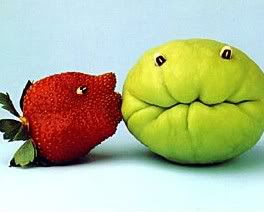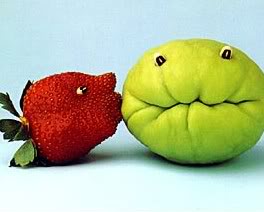Mad Cook
Master Chef
I was in the greengrocers near the stables on Saturday buying a sack of carrots for the Wonder Horse when I spotted something new. It was roughly pear-shaped and had pale green, smooth skin. The owner of the shop, who came originally from Australia, told me it was called a choko "down-under".
Never being one to turn down the chance of a new experience I bought one and brought it home. Looked it up in Jane Grigson's veg book and discovered that there are various "designs" of this vegetable (smooth, spiney, ridged, white green, etc., which is also called a chayote, a christophene and lots of other names. It seems it's popular in Caribbean, South American and Mexican cooking.
Sadly it was a grave disappointment - bland and boring. I steamed it as the shop lady suggested. Didn't taste of much so I delved into my store cupboard and made a slightly spicy tomato and olive sauce which redeemed it a bit but I don't thing I'll bother with one again. Jane Grigson hit it on the head when she described it as "pale-flavoured". The best I could say about it is that the pale green colouring of the one I bought was very pretty and just what I want for the walls in my dining room!
Is it much used in north American cooking? If so what do you do with it to make it a bit more interesting?
Never being one to turn down the chance of a new experience I bought one and brought it home. Looked it up in Jane Grigson's veg book and discovered that there are various "designs" of this vegetable (smooth, spiney, ridged, white green, etc., which is also called a chayote, a christophene and lots of other names. It seems it's popular in Caribbean, South American and Mexican cooking.
Sadly it was a grave disappointment - bland and boring. I steamed it as the shop lady suggested. Didn't taste of much so I delved into my store cupboard and made a slightly spicy tomato and olive sauce which redeemed it a bit but I don't thing I'll bother with one again. Jane Grigson hit it on the head when she described it as "pale-flavoured". The best I could say about it is that the pale green colouring of the one I bought was very pretty and just what I want for the walls in my dining room!
Is it much used in north American cooking? If so what do you do with it to make it a bit more interesting?
Last edited:



